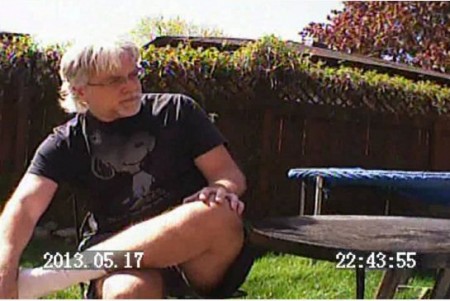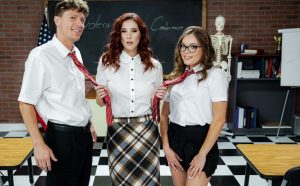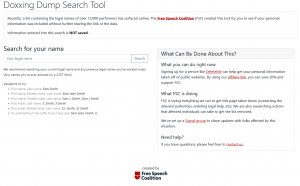A Star reporter goes undercover inside a gay conversion program in Toronto to uncover the controversial practice of “healing” homosexuality.
“There is no such thing as a homosexual, and I’ll say why.”
A white-bearded man makes this statement to a group of about 20 men and women sitting in a church near Yonge and Wilson, just steps from the York Mills subway. His name is Dave Lawson, and he’s a leader of Living Waters, a Christian program that performs controversial miracles: it claimsto heal gay people through an intensive 22-week program that costs $550.
“Under the way God has created us, we are only attracted to the opposite sex,” Lawson says.
This is one of the lessons taught at the Toronto headquarters of Living Waters this year. I know because I was there — an undercover reporter probing the group’s activities between January and May.
Lawson pauses, looking into the eclectic congregation, which includes a nurse, a massage therapist, an engineer. Some hope to be “healed” of homosexuality, just as Lawson claims he was more than 15 years ago.
He called his same-sex attractions “a curse” that stemmed from childhood bullying and bad parental relationships. But with the help of Jesus and Living Waters, he broke the curse — and we could too.
In a later interview, Lawson said he thinks the program offers a safe place for people dealing with sexual struggles. “I don’t hate homosexuals, I don’t hate gay people,” he said. “If anything I feel more compassion than most people. Most Christians anyway.”
“We’re not counselors, we don’t claim to be counselors. We don’t claim to be experts. We’re just doing the best we can with the information that’s out there.”
During my time undercover in Living Waters’ Toronto chapter, I posed as a depressed gay man who hoped to become straight. The Star sent me inside the Toronto program because many respected psychological authorities have denounced gay conversion programs, saying they pose serious psychological risks, including depression, anxiety and suicidal thoughts.
The movement to “heal” homosexuality is on its last legs in the United States. Exodus International, an American group, shut down in July and publicly apologized to those it had counselled.
Yet in Canada, similar programs still exist.
At Living Waters Toronto, the program is led by a team of volunteers, including a preschool teacher, a personal trainer and a pastor. Leaders give hope that God can heal participants’ “sexual and relational brokenness,” an umbrella term that includes such issues as homosexuality, masturbation and pornography addictions.
But some of those former participants told the Star stories of personal anguish and spiritual crisis when their attempts to become straight failed. (Their stories appear in Part 2 of the investigation..)
These stories chip away at Living Waters’ facade as a healing ministry, revealing instead a religious organization that hurts some participants in its attempts to heal sexual dysfunction and relationship problems.
People come to Living Waters with a variety of “sexual and relational” issues and speak about them in smaller groups separated by gender. In a recent group, two of four male participants sought healing for their homosexual desires.
As a government-registered charity under the Canada Revenue Agency, Living Waters collects the bulk of its revenue in tax-receipted donations. In the last three years, these donations have accounted for 62 per cent of the charity’s total revenue.
This money has helped Living Waters establish programs in churches across Canada, from Charlottetown to Winnipeg to Edmonton to Vancouver, where a chic brownstone serves as national headquarters. Six of its top employees make between $40,000 and $79,999 a year.
Living Waters has posted several statements on its website since the Star investigation began. On June 20, it wrote that only five per cent of participants had “self-identified unwanted same sex attraction.”
It continued: “We are saddened to recently learn that a journalist from a mainstream media outlet assumed a false identity … and betrayed the trust of fellow small group members who wanted healing within a loving community.”
In the most recent statement, on Sept. 30, it wrote: “With ongoing research we have grown in our awareness that it is highly unusual for an individual to shift from being same sex attracted to being exclusively heterosexually attracted and we discuss with our leaders and volunteers the importance of not promising this unusual kind of ‘change.’”
Living Waters must meet certain requirements to keep its charity status, one of which is to provide a “public benefit.”
In the CRA’s guidelines for registering a charity, it describes “benefit” as “directed toward achieving a universal good that is not harmful to the public — a socially useful endeavor.”
A frigid January night
I took the subway each Thursday night to the Evangel Temple, a large church known for its young and hip congregation — the church advertises its iPad app and Twitter account on an electric sign facing Yonge St.
The Evangel Temple has allowed Living Waters to use its premises ever since Barry Lee, a self-described psychotherapist counselor and former pastor of the church, founded the program more than 10 years ago.
Lee has since retired from his leadership role, but still provides one-on-one counseling for Living Waters participants seeking more healing.
Testimonies on his website include one from a client who says Lee helped “leave behind my homosexual identity and lifestyle that had plagued me for over 25 years.”
Lee did not respond to multiple requests for an interview.
I applied to the program under the pseudonym “Graeme Vernon” in a series of online applications last December. I answered questions such as “When was your first homosexual encounter?” and “Have you ever been tested for AIDS?”
“My homosexual relationships feel good at the time, but always leave me feeling empty and angry at myself afterwards,” I wrote, adding that I wanted to move past my gay feelings and marry a woman one day.
(In reality, I’m a relatively well-adjusted gay man and did not seek to be “cured.”)
The program began on a frigid January night. Bundled in winter jackets and boots, about 20 strangers — all Christian, mostly Evangelical — trudged into the church and upstairs to a small, plain room.
It was inside this room that we would pray together, cry together and share our deepest struggles — marital problems, childhood sexual abuse, suppressed sexual fantasies — for three hours once a week.
We weren’t allowed to speak to one another outside of our Thursday-evening sessions. If we developed attractions toward another participant, we were told to inform a leader immediately.
Standing before the group, Dave Lawson welcomed us to “the hospital of the church.” Our journeys would begin when we got real with Jesus, he said, and he was excited that we all wanted to take the first step.
Lawson started by sharing his own story. When he was in his early 20s, many years before becoming Christian, he had frivolous sexual relationships with other men. During this period he helped pay his rent by making donations at a sperm bank.
“The great thing about the sperm bank was they tested you for HIV, which I needed at the time,” he said.
One night he got a voice mail from the clinic telling him to come in first thing the next morning.
Lawson said he panicked, assuming he had tested positive for the AIDS virus. In that moment he decided he would rather die than suffer through a diagnosis.
He walked out of his apartment, hopped on his yellow 10-speed bike and pedaled down a ramp on to the highway. As the headlights hurtled toward him in the darkness, he waited for impact.
But Jesus was with him that night, he said. Though he doesn’t remember the exact details, but he eventually got off the road and headed back to his apartment.
Realizing he had hit rock bottom, Lawson reached out to a Christian friend for guidance. His journey of faith eventually led him to Living Waters, where he found the answers he so desperately wanted.
With the guidance of leaders, Lawson scoured his past for the cause of his homosexuality — a tenet of Living Waters. He eventually unearthed memories of childhood bullying and a yearning for a closer relationship with his father.
These were the causes of his sexual brokenness, he learned.
Lawson then set about rebuilding his life on “the truth” that God created him a heterosexual. He claimed that, over time, God released him of his gay desires.
“And now I’m here to show you the power of God’s grace,” he told us.
A woman’s shout interrupted him. “But you never said anything about the test results!” Her name is Martha, and she’s married to Lawson.
“Well, I’m not dead!” he laughed. Everyone else joined in.
Search for the cause
Our first weeks in Living Waterswere spent hunting for the causes of our own sexual brokenness. Once we discovered the root, leaders encouraged us to forgive the person responsible for the damage.
For a few participants, this search seemed to make sense.
If a boy was encouraged to look at pornography at an early age, he could grow up to become a regular viewer — an addict, in Living Waters’ eyes. While it may not be scientific, it seemed logical enough.
But for those hoping to overcome their homosexuality, the search for a cause was not so simple.
We were encouraged to revisit our childhood memories for the root of our sexual brokenness, often involving relationships with our mothers and fathers.
When I said I didn’t think my mother influenced my homosexuality, I was advised to pray on it. If I prayed hard enough, lost memories of when I was an infant could surface, shedding light on my brokenness.
During a lesson titled “The Father Wound,” a participant said his father was absent when his mother was pregnant. After considering the teachings, he realized his dad’s absence may be the root of his gay desires — he longed for male affection even inside the womb. Our leaders encouraged this as truth and thanked God for giving him this insight.
That no one is born gay and that the seeds of gay attraction are planted in childhood was a consistent message.
“Any honest scientist will tell you that the idea that you’re born gay is not true. It’s not based on science,” said one of the leaders during a lesson on the “true” masculine.
“It happens when, in the process of growing up, a young person becomes aroused by the same sex. They start to think this attraction is part of them, but this is a lie.”
In small group sessions, I watched as participants came to be persuaded that their parents had influenced their homosexuality. These revelations came with a sense of relief — by forgiving their parents and surrendering to Jesus, they were told they could be released of gay attractions.
Once we found the source of our gayness, we were encouraged to make same-sex friendships. These relationships could affirm our gender identities and give us the courage to start heterosexual relationships.
“Friendships with people of the same sex help prepare us for intimate relationships with the opposite sex,” one leader explained, saying he helped overcome his same-sex attractions by befriending men from his church.
“I can now look into a man’s eye and see his soul. Nothing else,” he said.
Kyle’s story
For some participants, the program wasn’t making much of a difference in their same-sex attractions.
Kyle was in Living Waters for the second year, and he drove more than two hours for our weekly sessions. He also attended additional counseling sessions with Barry Lee, the founder of the Toronto program.
Kyle’s life resembled my cover story; he was gay, depressed and yearning for change. He said he wanted to marry a woman soon, both because of his faith and pressure from his parents.
But that hadn’t always been the case; Kyle — not his real name — was once happy with his sexuality. He attended the Toronto Pride parade a few years ago and was accepted when he came out to friends. He often spent weekends out of town with his boyfriend.
“In that time I felt freer than I ever have,” he said one night.
Kyle eventually realized that his faith didn’t mesh with his lifestyle. He couldn’t be gay and Christian. At the same time he suffered from depression and had suicidal thoughts. His doctor prescribed a cocktail of antidepressants, which sapped his energy and spirit.
He decided to try Living Waters.
After joining, Kyle dumped his boyfriend, embraced Jesus and began to believe that his homosexuality stemmed from a tumultuous relationship with his father.
Living Waters also taught him not to hate himself for being attracted to men — these feelings were simply temptations, not part of his identity, and God loved him no matter what.
By the end of the program, Kyle had taken significant steps. He no longer took anti-depressants and had stopped viewing Internet pornography.
On one of the final nights of the program, Kyle reached out to me with a prayer exercised that he told me had helped him end his relationship with his boyfriend.
“I think this could help you out,” he said, handing me the paper and smiling.
In our group session that night, Kyle said he planned to create an eHarmony account to find a girlfriend.
A leader interjected.
“If I can be blunt, are you even attracted to women at this point?” he asked.
“Sexually, no. But I was just talking to Barry about it and he says it will come with interaction as we start dating,” he replied, with a nervous laugh. “It’s unknown territory for me.”
The leaders then prayed for Kyle, asking God to “silence the other voices” tempting him and lead him to the right Christian woman.
Controversial study
Mainstream psychology rejects the idea that gays can — or should — be healed.
The American Psychological Association deleted homosexuality from its list of treatable mental disorders 40 years ago. The APA says it’s still unclear what makes a person gay — a gay gene has yet to be discovered — but no research has proved that someone can be made gay by his or her upbringing.
A 2009 APA report found that efforts to change someone’s sexual orientation are ineffective and dangerous; former participants have experienced depression, loss of sexual feeling and even suicidal thoughts.
“Frankly, the gay person is coming into therapy for a problem they don’t have,” says Jack Drescher, a psychiatrist involved in the groundbreaking report.
“But the people who provide this therapy say they do know the cause, and that it’s caused by something your parents did to you. That can be seriously harmful.”
The theory that parents influence their children’s homosexuality bears a striking resemblance to a controversial study from the ’60s.
In 1962, Irving Bieber, an American psychoanalyst, studied 106 gay men in hopes of finding the cause of homosexuality. Participants each completed a 26-page survey that included such questions as: “Did your mother encourage masculine activities and behaviors?” and “Were you your father’s favorite?”
Bieber announced his finding: homosexuality is a “personality maladaption” caused by a person’s upbringing. By addressing the familial root of gayness in his patients, he claimed to convert 29 gay men, 27 per cent of his sample.
“We assume that heterosexuality is the biologic norm and that unless interfered with all individuals are heterosexual,” he wrote. “In our view, every homosexual is, in reality, a ‘latent’ heterosexual.”
Bieber’s purported gay-to-straight converts raised a few eyebrows in the psychological community.
C.A. Tripp, another U.S. psychologist, asked Bieber to produce a single “cured” patient. Bieber did not and instead filed an ethics complaint to the APA against Tripp. The complaint was eventually dropped.
To this day, none of Bieber’s patients has been found.
While Living Waters never explicitly referred to psychology, it brought in its own scientist. In our 10th week, Lawson invited Blake Martin, a close friend and neuroscientist from York University, to lead a lesson on sexual addiction.
Martin, who teaches in York’s dance science program, introduced himself as a Christian and a scientist, but said tonight he’d be wearing his “neuroscientist hat.”
Speaking with the gusto of a motivational speaker, he explained that our brains could be “rewired” by breaking bad habits and creating good new ones.
“The brain is very, very changeable. If you ask your brain to do a thing, it will do it. If you ask your brain to change, it will,” he said.
Martin encouraged us to break “the cycle of addiction.” He said this begins when we feel stimulation, suffer withdrawal and crave the next hit.
Whether or not we realized it, these cycles were rooted in our brains. But with God’s help, he said, they can be broken.
“The moment of choice, where you say, ‘What should I do in this moment?’ that moment, is incredibly potent. That’s where God can change your behavior. And our behavior changes our brains,” he said.
Martin spoke generally about sexual addictions and did not refer to sexual orientation as an addiction. He later told the Star that he doesn’t see homosexuality as an addiction that can be cured.
“I wasn’t going to them to help with a gay issue,” he said over the phone. “As for trying to heal someone who is gay, I’m not sure that a gay person can be healed.”
After Martin’s talk, I told my small group that the word “addiction” isn’t one I thought described my gay attractions.
A leader walked me through the addiction cycle, comparing it to my desire to date and have sex with men.
“There is compulsion to engage in the behavior, loss of control, experiencing the behavior and then the negative emotional state when behavior is over,” he said. “Yup, sounds like an addiction to me.”
I hadn’t ever considered myself an addict to homosexuality, but after today I realized it, I told the group.
“Congratulations. It takes some addicts 20 years finally to get that insight,” the leader said, placing a hand on my shoulder. “Let’s pray on this.”
As three leaders placed their hands on me for prayer, one had a vision: he pictured me standing between two naked statues, one of Michelangelo’s David and another of the Venus de Milo.
“Instead of getting that rush from David, you can get that rush from Venus. I’m seeing that as your goal,” he told me.
Another leaderwhispered a prayer of thanks: “Thank you Jesus for putting in his heart the desire for change. We pray that you will continue to do your good work to bring Graeme into fullness.”
They finished by rubbing oil on to my forehead in the shape of a cross. “I seal in this healing, in the name of the Father, the Son and the Holy Spirit.”






